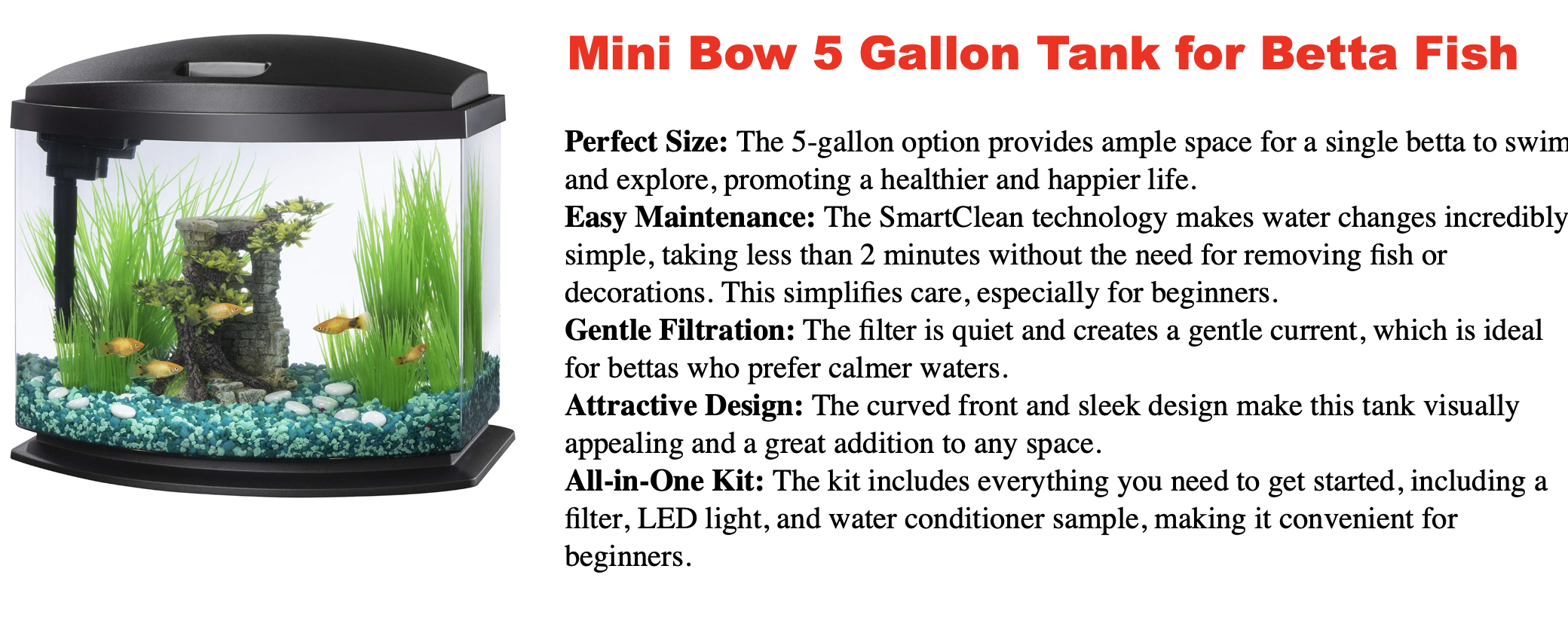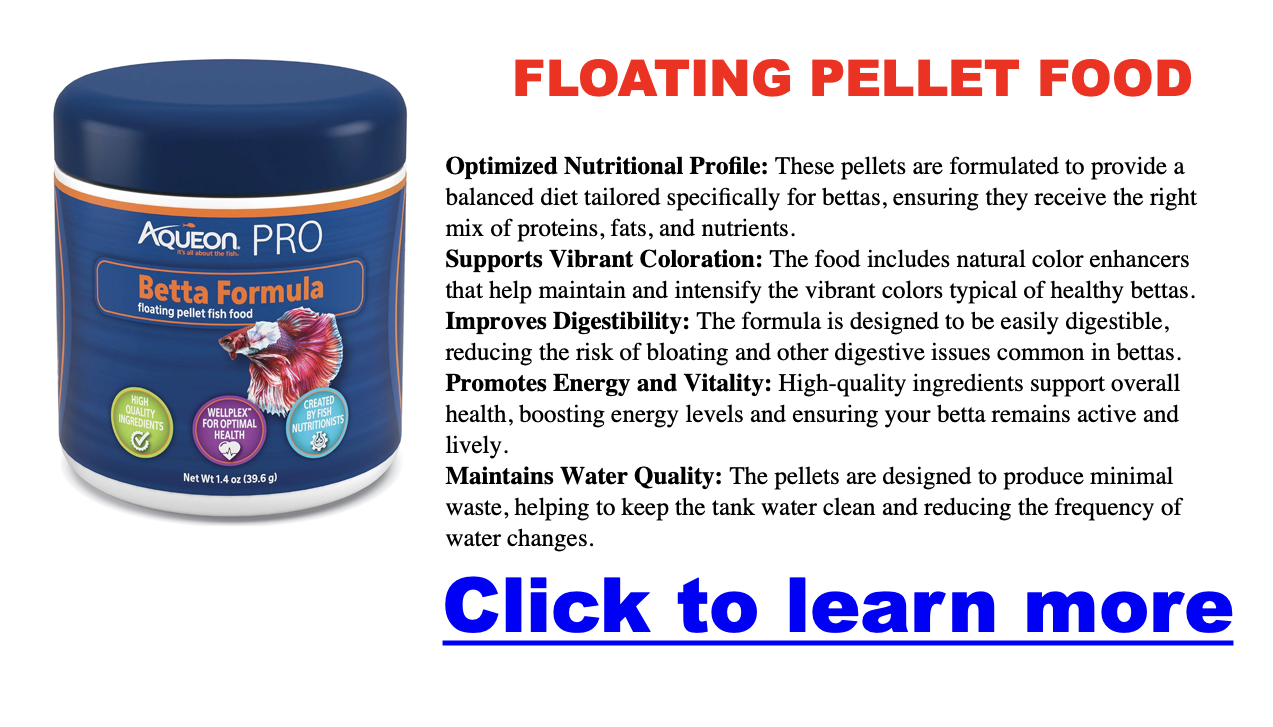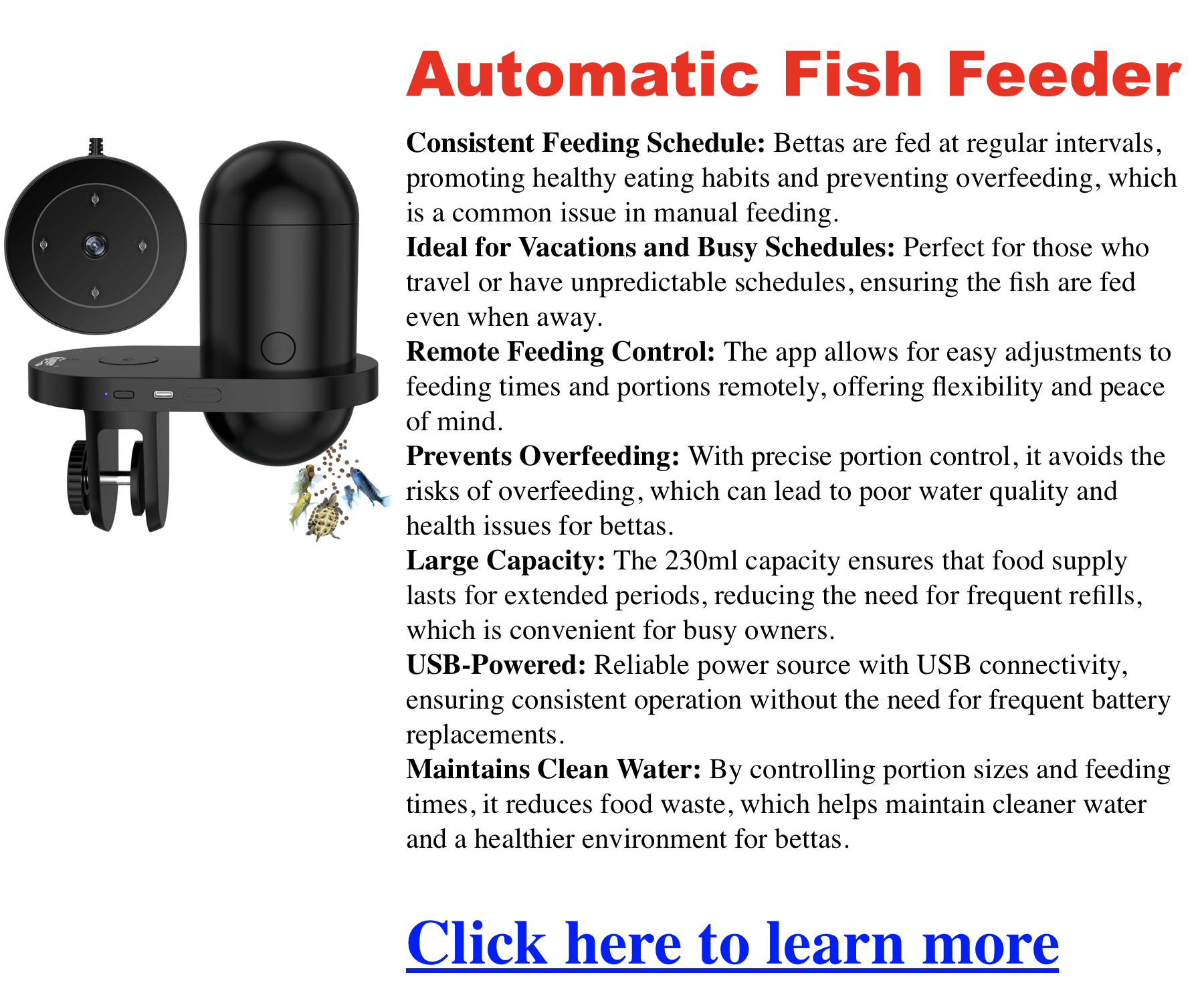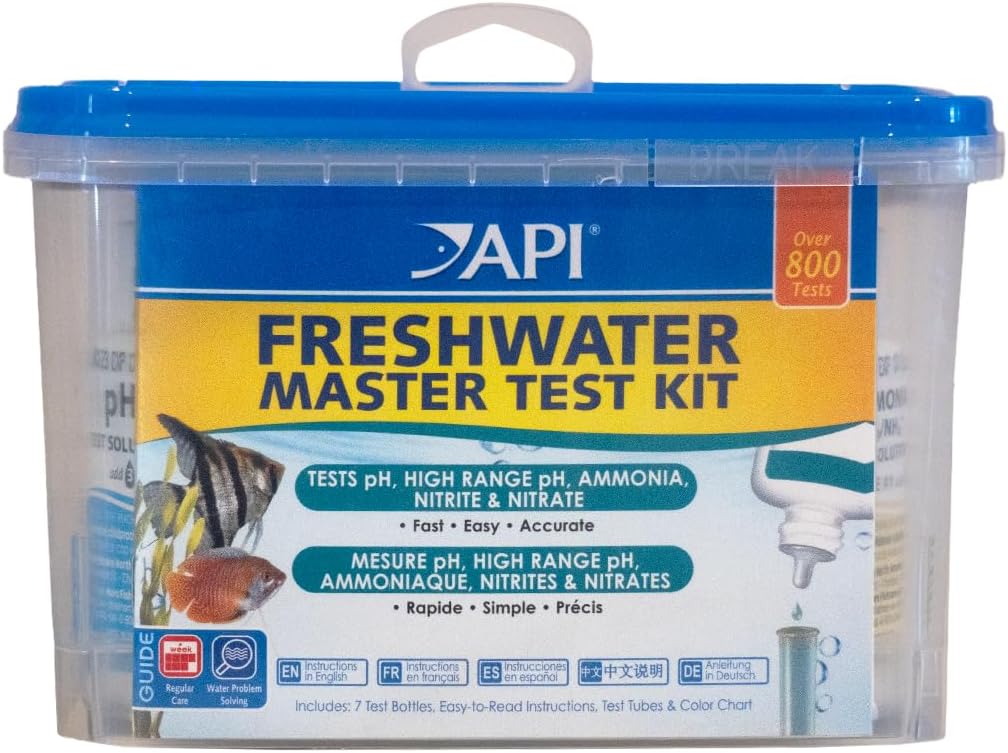Matt
Betta Fish Temperature Guide: Best Water Temp for a Healthy Betta
Betta fish (Siamese Fighting Fish) come from the warm, slow-moving waters of Southeast Asia. Keeping their water within a stable, warm temperature range is one of the most important factors for their health, immune strength, and lifespan.
The Optimal Betta Temperature Range
A betta’s comfort zone is narrow, but easy to maintain with the right equipment.
Betta Water Temperature Guide
| Temperature | Condition | Impact on Betta |
|---|---|---|
| 76°F – 81°F (24.5°C – 27°C) | Ideal / Thriving | Healthy metabolism, strong immune system, vibrant colors, active behavior. |
| 72°F – 75°F (22°C – 24°C) | Tolerable / Surviving | Lethargy, faded colors, slow metabolism, higher disease risk (including Ich). |
| Below 72°F (22°C) | Dangerous / Stressful | Immune slowdown, appetite loss, illness, possible death. |
| Above 82°F (27.5°C) | Dangerous / Stressful | Overheating, rapid metabolism, reduced oxygen, erratic behavior. |
💡 Key Takeaway:
Room temperature is usually too cold. Even if your home is 76°F, tank water is typically a few degrees cooler due to evaporation and heat loss. A heater is something you need.
How to Maintain the Perfect Temperature
You need two things: a heater and a thermometer.
1. Choosing the Right Heater Wattage
Heater wattage depends on tank size and how much warmer the tank needs to be compared to the room.
General rule:
Use 3–5 watts per gallon. When unsure, choose the slightly higher wattage—most modern heaters have thermostats to prevent overheating.
| Tank Size | Recommended Wattage | Notes |
|---|---|---|
| 3 gallons | 10–25W | Mini-submersible or small preset heaters work well. |
| 5 gallons | 25–50W | A 50W heater offers great stability. |
| 10 gallons | 50–75W | Use 75W if your room runs cold. |
| 20 gallons | 75–100W | Adjustable heaters are best. |
2. Heater Types
Adjustable Heaters
-
Let you set an exact temperature (ex: 79°F)
-
Best for precise control or treating sick fish
Preset Heaters
-
Set to one temperature (usually around 78°F)
-
Good for small tanks where space is limited
3. Use a Reliable Thermometer
Never rely on the heater dial alone. Place the thermometer on the opposite side of the tank from the heater.
Types:
-
Digital: Most accurate and easiest to read
-
Glass: Cheap and accurate, but fragile
-
Stick-on strips: Read outside-glass temperature → not accurate
Maintaining Temperature Stability
Bettas are more sensitive to fluctuations than to being slightly too warm or cool. Avoid swings greater than ±2°F per day.
Heater Placement
Place your heater near the filter output or an air stone so warm water disperses evenly. Submersible heaters can be placed vertically or horizontally.
Water Change Tips
-
Match temperatures when adding new water
-
Use a thermometer for both tank and replacement water
-
Make changes gradually to prevent shock
Seasonal & Environmental Tips
-
Use a lid to reduce heat loss from evaporation
-
Avoid cold spots: keep the tank away from AC vents, drafty windows, or exterior doors
-
If water overheats:
-
Blow a small fan across the surface
-
Float a bag of ice (made with dechlorinated water) in emergencies
-
Do You Really Need a Heater?
Almost always, yes.
Unless your room stays around 78°F all day and night, temperatures will drop—especially in smaller tanks.
A heater helps:
-
Keep temperature stable
-
Prevent nighttime dips
-
Support digestion, immunity, and healing
Even if your room “feels warm,” the tank may drop without you noticing.
Ideal Temperature Range
-
Optimal: 78°F to 80°F (25.5°C to 26.5°C)
-
Acceptable: 76°F to 82°F (24°C to 28°C)
Danger Zones:
-
Below 74°F (23°C): Illness and sluggishness
-
Above 82°F (28°C): Stress and shortened lifespan
Signs Your Betta Is Too Cold
| Sign | Meaning |
|---|---|
| Lethargy | Slowed metabolism |
| Clamped fins | Stress or discomfort |
| Loss of appetite | Trouble digesting in cold temperatures |
| Gasping at the surface | Poor oxygen absorption |
| Getting sick more often | Suppressed immune system |
Choosing & Using a Heater Properly
-
Get a reliable, adjustable heater
-
Use 25W for small tanks (2.5–5 gallons)
-
Pair it with a digital thermometer
-
Don’t place heaters against decor or plants
-
Check the temperature daily, especially during seasonal shifts
Other Important Water Parameters
Temperature is only one piece. Also monitor:
-
Ammonia
-
Nitrite
-
Nitrate
-
pH
Fluctuating temperatures + poor water quality create the perfect environment for diseases like fin rot, velvet, and columnaris.
Final Thoughts
Stable warmth = a healthy betta.
A heater is one of the simplest and most important pieces of equipment you can buy for your betta’s long-term health.
If you want help dialing in the perfect setup, our Betta Care Guide eBook breaks down ideal heater sizes, tank setups, and troubleshooting based on your specific environment.
How Long Do Betta Fish Live?
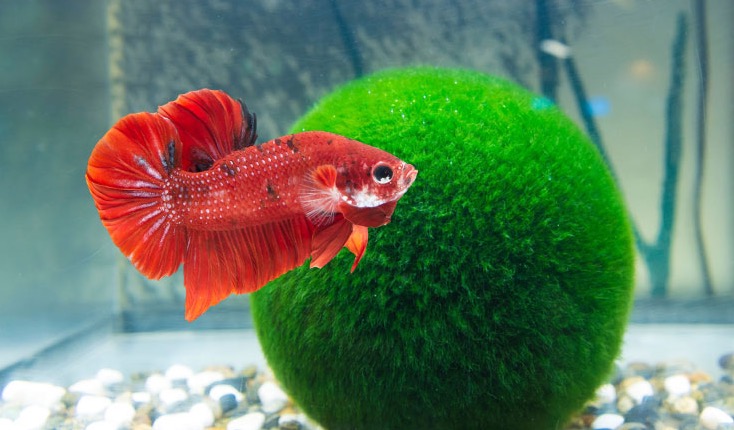
If you’ve recently fallen in love with the vibrant colors and personalities of a Betta fish, one of the first questions you likely asked is the most important: “How long do I have with this wonderful pet?”
It’s a sign of a caring owner to ask about the commitment, and the answer is both straightforward and dependent on you.
The Direct Answer: Betta Fish Lifespan
The average, realistic lifespan for a Betta fish (also known as the Siamese Fighting Fish) kept in a proper home aquarium is:
2 to 4 Years in Captivity
While some lucky owners report their Bettas swimming happily past the 5-year mark, the 2 to 4 year range is what you should expect. However, this range has two massive variables: the fish’s age when you buy it and the quality of the environment you provide.
The Lifespan Reality Check
Before you even bring your Betta home, a significant portion of its life has already passed.
1. Age at Purchase is Key
When you see those beautiful, fully developed male Bettas in the store, they are not babies. They are generally only sold after their signature flowing fins and bright colors have fully matured.
-
Most Bettas are already 6 months to 1 year old when purchased.
This means a Betta that lives for three more years under your care is actually a four-year-old fish! If you are interested in a longer potential lifespan, look for younger females or shorter-finned males (Plakats), as they are often sold at a younger age.
2. Genetics and Inbreeding
Bettas have been heavily bred for decades to achieve their stunning fin types and color variations. Unfortunately, this intense selective breeding can sometimes lead to weaker genetics. Some Bettas are simply more prone to illness or organ failure than others, even with perfect care.
5 Essential Tips to Extend Your Betta’s Life
If you want your Betta to reach the high end of that range (or even beyond!), you must upgrade your setup from the traditional “Betta bowl” to a proper tropical aquarium.
1. 🏡 Tank Size is Non-Negotiable: Minimum 5 Gallons
Click here to make sure your aquarium water is good
This is the single most important factor. Bettas are often sold in cups, leading new owners to believe they can thrive in tiny containers. This is false.
| Condition | Tank Size | Impact on Life |
| Too Small | Under 5 Gallons | Rapid buildup of deadly toxins (ammonia), constant stress, drastically reduced lifespan. |
| Ideal | 5 to 10 Gallons | Stable water chemistry, ample swimming space, and room for necessary equipment. |
A larger body of water is harder to foul up, which keeps stress low and the Betta’s immune system strong.
2. Temperature Stability is Life: Add a Heater
Bettas are tropical fish and require warm, consistent water to maintain their metabolism and fight off disease.
-
Required Temperature Range: $76^\circ \text{F}$ to $82^\circ \text{F}$ ($24.5^\circ \text{C}$ to $28^\circ \text{C}$).
If the temperature drops below this range, your Betta’s immune system slows down, making it highly susceptible to common killers like Ich (White Spot Disease) and Fin Rot.
3. Zero Tolerance for Toxins: Install a Filter
Contrary to popular myth, Bettas need clean water just like any other fish. The waste they produce breaks down into ammonia and then nitrite—which are highly poisonous.
-
The Solution: You need a gentle filter (like a sponge filter or a low-flow hang-on-back model) to harbor beneficial bacteria that neutralize these toxins through the Nitrogen Cycle.
-
Maintenance: Weekly partial water changes (25%) are still necessary to remove built-up nitrates.
4. Feed Less, Not More: Avoid Constipation
The most common mistake new owners make is overfeeding. A Betta’s stomach is only about the size of its eye.
Overfeeding leads to two major issues:
-
Water Fouling: Uneaten food decays, spiking dangerous ammonia levels.
-
Illness: The Betta develops painful swim bladder issues and constipation, which are often fatal.
The Rule: Only feed what your Betta can consume in 2 minutes or less. A staple diet of high-quality pellets supplemented with occasional frozen or freeze-dried protein (bloodworms, brine shrimp) is ideal.
5. Provide Enrichment and Low-Stress Hiding Spots
A bored or stressed Betta is an unhealthy Betta. These fish are intelligent and appreciate a stimulating environment.
-
Plants: Use real or silk plants. Avoid sharp plastic plants, which can easily tear their delicate fins, opening them up to infections like fin rot.
-
Hiding: Add Betta-safe caves, floating logs, or ceramic décor where they can rest and feel secure.
-
Rest: Bettas often like to rest near the surface; a Betta leaf hammock is a perfect addition.
You Control Their Destiny
While genetics set the potential, your care determines the reality. A Betta that is living in a heated, filtered, minimum 5-gallon tank, and is fed a controlled diet, has a high chance of living a long, happy life of 3 to 4 years—or possibly more!
You have the knowledge now to turn that informational search into a successful pet-owning experience.
How To Choose The Right Betta Fish Tank
A one-gallon tank is not suitable for a betta fish —not only are they too small, but they are difficult to maintain with stable water parameters.
5-gallon heated, filtered, and planted tank with a soil or sand substrate is recommended. Since bettas are tropical fish, they require a heater to prevent temperature fluctuations. If keeping a single betta, a 5-gallon tank is ideal, but if you plan to add tankmates, a 10-gallon tank is recommended.
Surviving is not thriving, and a 1-gallon setup isn’t even sufficient for survival. To save money, consider checking local hobbyist groups or waiting for dollar-per-gallon sales at local fish stores (LFS). Sponge filters are a great low-flow option that minimizes stress while ensuring proper filtration, oxygenation, and water movement.
Additionally, live plants help reduce nitrates, provide resting spots, and outcompete algae. Before setting up a tank, research the nitrogen cycle and consider investing in an API Master Test Kit to monitor water quality.
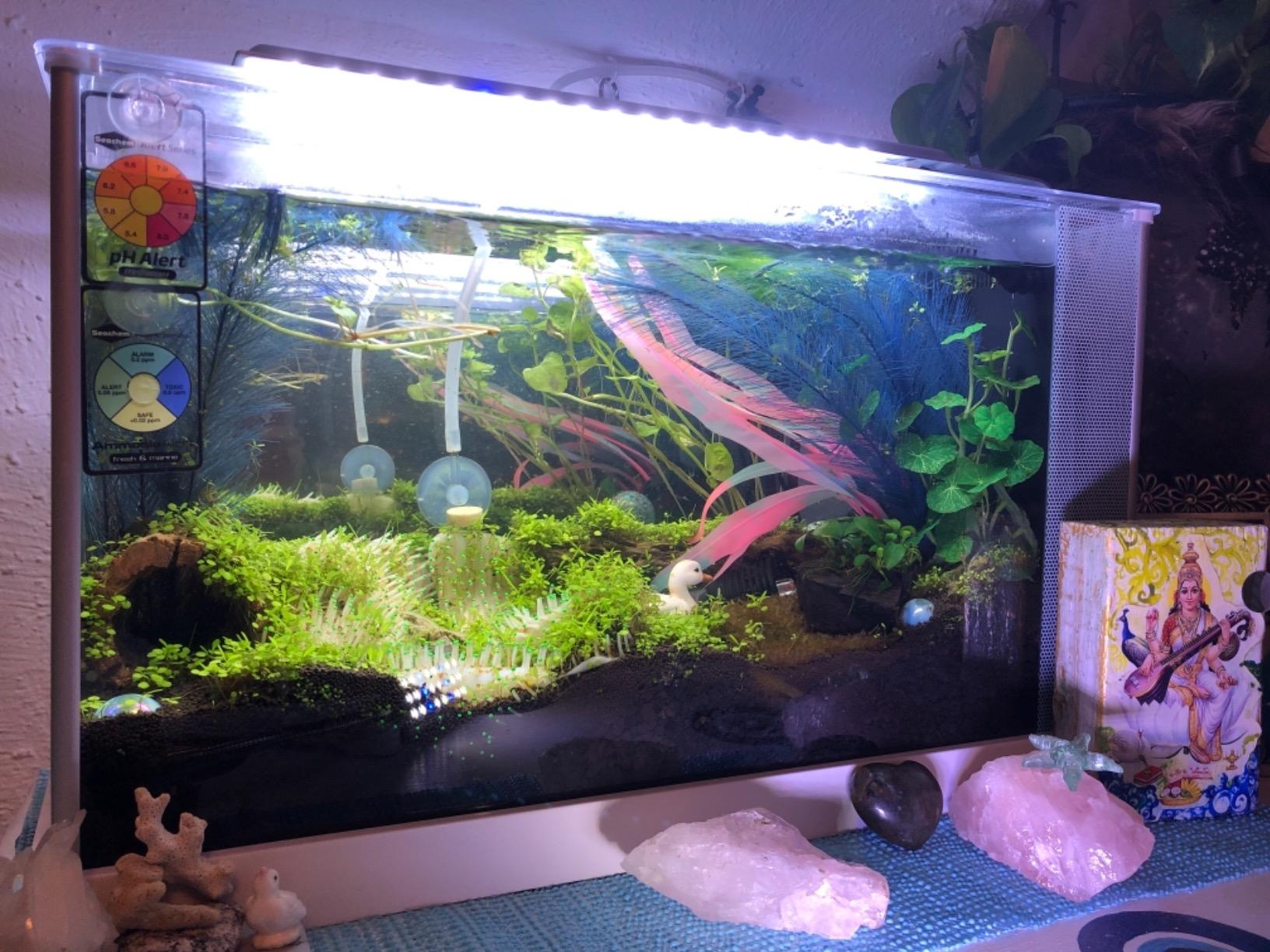
Best Overall Betta Tank – Fluval Spec Aquarium Kit
Top Betta Fish Tank Options
| Tank Name | Capacity | Features | Notes |
|---|---|---|---|
| Fluval Spec Aquarium Kit | 5 gallons | Advanced filtration, LED lighting | Sleek design with space to add a heater. |
| Marineland Portrait Aquarium | 5 gallons | Hidden filtration, LED lighting | Modern portrait glass design with moonlight mode. |
| Aqueon LED MiniBow Kit | 2.5 or 5 gallons | LED lighting, SmartClean Technology | Compact design, includes food and water care sample. |
| Tetra LED Cube Aquarium | 3 gallons | Clear cube, LED lighting, Tetra 3i filter | Compact and offers a 360° view. |
| Koller AquaView Aquarium | 2 gallons | 7-color LED lighting, internal power filter | Cylindrical design for full viewing. |
| Fluval Betta Premium | 2.6 gallons | Compact design, suitable for children | Best for beginners or as a decorative tank. |
| Glofish Betta Shadowbox | 3 gallons | Impact-resistant plastic, LED lighting | Provides ample space for betta comfort. |
| ERAARK Self-Cleaning Tank | 4.5 gallons | Self-cleaning system, modern design | Ideal for low-maintenance setups. |
Betta Fish Habitat
What size tank do betta fish need
Click here for my favorite betta fish tank that has built-in filtration
While you might find some sources suggesting smaller tanks, providing your betta fish with ample space is crucial for their well-being. Here’s a breakdown of tank size recommendations:
- Minimum: 5 gallons (19 liters) is the absolute minimum. Anything smaller restricts their movement and leads to poor water quality, which can cause stress and health problems.
- Recommended: 10 gallons (38 liters) is ideal. This size offers more swimming space, promotes exploration, and makes maintaining stable water conditions easier.
- Even Better: Consider 15+ gallons for an even richer environment. This allows for more decorations, plants, and even the possibility of compatible tank mates.
Here are some things to consider:
- Tank Size: 5 gallons at minimum is recommended, but larger is always better. A bigger tank provides more swimming space and helps maintain stable water parameters.
- Water Temperature: Bettas prefer a water temperature between 78-80°F (25-27°C). A good tank heater is essential for maintaining a consistent temperature.
- Filtration: A gentle filter is necessary to keep the water clean and remove waste. However, avoid strong currents as bettas prefer calmer waters.
- Water Quality: Regular water changes and monitoring of pH, nitrite, ammonia, and nitrate levels are crucial for your betta’s health.
- Heating and Lighting: Invest in a reliable heater to maintain a stable water temperature. An LED light with adjustable brightness can create a visually appealing environment.
- Aesthetics and Design: Select a tank that fits your personal style and complements your space. Consider the shape, color, and overall design.
- Budget: Betta tanks can range from affordable to high-end. Set a budget before you start shopping to avoid overspending.
Types of Betta Fish Tanks
Click here for my favorite 5 gallon tank with built-in filtration
When choosing a tank, you’ll encounter two main materials:
- Glass: Glass tanks are durable, scratch-resistant, and offer excellent clarity. They are the most common choice and come in various shapes and sizes.
- Acrylic: Acrylic tanks are lighter and less prone to breakage than glass. However, they can scratch more easily and may become cloudy over time.
| Brand/Model | Size (Gallons) | Material | Features | Pros | Cons |
|---|---|---|---|---|---|
| Fluval Spec V | 5 | Glass | Sleek design, built-in filtration, LED lighting | Compact, ideal for desktops, aesthetically pleasing | Limited space for decorations |
| Fluval Flex | 9/15 | Glass | Curved front, multi-stage filtration, customizable LED lighting | Unique design, efficient filtration, customizable lighting | Can be more expensive than other options |
| Aqueon LED Aquarium Kit | Various | Glass | Filter, heater, LED light included | Affordable, good for beginners | Basic design |
| Marina 5g LED Aquarium Kit | 5 | Glass | Simple design, energy-efficient LED, quiet filter | Budget-friendly, quiet operation | Limited customization options |
| Tetra Crescent Acrylic | 5 | Acrylic | Lightweight, less prone to breakage, filter and LED light included | Durable, good for beginners | Can scratch easily |
Recreating a Betta Fish’s Natural Habitat
- Bettas are native to Southeast Asia’s shallow, slow-moving, and densely vegetated waters. To mimic this, use plenty of plants and decorations to create a sense of safety and familiarity for your betta.
- At least 5 gallons is recommended, though a 10-gallon tank is ideal. Tanks larger than 15 gallons provide even more room for enrichment and tank mates.
- Opt for longer, shallower tanks instead of tall ones, as these better suit the betta’s swimming preferences.
- Use a filter with a gentle flow, as bettas thrive in calm waters.
- Using a reliable heater, maintain the water temperature between 78-80°F (25-27°C).
- Lighting should be subdued, mimicking the soft light found in their natural environment. A timer can help maintain a day/night cycle.
- Incorporate aquarium plants such as anubias, Christmas moss, and tall background plants. Bettas enjoy resting on or swimming through these plants and building bubble nests among floating plants. Indian almond (catappa) leaves are also beneficial.
- Decorations should be smooth with no sharp edges. Ensure any holes in decorations are large enough for your betta to swim through safely.
Choosing Tank Mates for Your Betta
While betta fish are often kept alone due to their territorial nature, it’s possible to house them with other compatible species in a larger tank (10 gallons or more). However, careful consideration is crucial to ensure a peaceful community.
Suitable Tank Mates:
- Snails: Nerite snails, mystery snails, and ramshorn snails are peaceful algae eaters that won’t bother your betta.
- Shrimp: Ghost shrimp, cherry shrimp, and amano shrimp can add nice visuals and help clean up leftover food.
- Small, Peaceful Fish: Certain small fish like neon tetras, ember tetras, and harlequin rasboras can live with bettas if the tank is large enough and well-planted.
Unsuitable Tank Mates:
- Other Betta Fish: Never house two male bettas together, as they will fight aggressively. Females can sometimes be kept together in a sorority tank, but this requires careful planning and monitoring.
- Fin-Nippers: Avoid fish known to nip fins, such as tiger barbs or certain types of gouramis.
- Large, Aggressive Fish: Large or aggressive fish will bully or even kill your betta.
Tips for Introducing Tank Mates:
- Quarantine: Always quarantine new fish for at least two weeks to ensure they are healthy and disease-free before introducing them to your betta’s tank.
- Monitor Behavior: Closely observe your betta’s behavior after introducing tank mates. If you see signs of aggression or stress, separate them immediately.
- Provide Hiding Places: Add plenty of plants, caves, and other hiding places to the tank so your betta has a place to retreat if it feels threatened.
Betta Fish Care FAQ
What is the minimum tank size for a betta fish?
While some sources might suggest smaller tanks, the minimum tank size is 5 gallons. Anything smaller restricts their movement and can lead to poor water quality, causing stress and health issues.
What is the ideal tank size for a betta fish?
The ideal tank size for a betta is 10 gallons. This size allows for more swimming space, promotes exploration, and makes maintaining stable water parameters easier.
Can betta fish be kept with other fish?
Male bettas are known for their territorial nature and are best kept alone. However, in larger tanks (10 gallons or more) it is possible to keep them with peaceful, compatible tank mates like snails, shrimp, and certain small fish. Avoid keeping them with other bettas, fin-nippers, large, or aggressive fish.
What kind of filter should I use in my betta tank?
Bettas prefer calm water, so choose a gentle filter. Avoid filters that create strong currents, as this can stress them. Sponge filters and filters with adjustable flow settings are good options.
What temperature should the water be in my betta tank?
Bettas are tropical fish and prefer water temperatures between 78-80°F (25-27°C). A good aquarium heater is essential to maintain a consistent and comfortable temperature for your betta.
Do betta fish need a heater?
Yes, betta fish need a heater. They are tropical fish and require consistent water temperatures of 78-80°F (25-27°C) to thrive.
Can I train my betta fish to do tricks?
Yes, betta fish can be trained to do simple tricks with patience and positive reinforcement. Using food as a reward, you can teach them to follow your finger, swim through hoops, or even jump out of the water for a treat.
Signs of a sick betta fish
Common signs of a sick betta include lethargy, loss of appetite, clamped fins, discoloration, difficulty breathing, and erratic swimming.
Betta Fish Pellets: The Staple Diet Every Betta Needs
Walk down the aquarium aisle and you’ll see shelves full of different foods for tropical fish—flakes, freeze-dried treats, frozen packs, and even live culture kits. But if you ask experienced betta keepers what the best everyday food is for these colorful, carnivorous fish, the answer is almost always the same: pellets.
Pellets are considered the gold standard for feeding bettas. In this guide, we’ll explain why pellets are so effective, how to choose the right ones, how much to feed, and which brands stand out as the healthiest options.
What Are Betta Pellets?
Pellets are small, compact, high-protein bites formulated specifically for betta fish. Unlike generic tropical flakes, which often crumble and sink, pellets:
-
Are betta-sized and easier to portion.
-
Typically float at the water’s surface, where bettas naturally feed.
-
Deliver consistent nutrition in each bite.
There are two main types:
-
Floating pellets: Preferred, since bettas are surface feeders.
-
Sinking pellets: Sometimes used, but risk being ignored or left to rot.
Why Pellets Fit Bettas’ Nutritional Needs
Bettas are carnivorous/insectivorous fish. In the wild, they feed on mosquito larvae, tiny insects, and aquatic invertebrates. To thrive in captivity, their diet should be:
-
High protein (≥35%)
-
Moderate fat (4–10%)
-
Low in fillers like wheat, corn, or soy
Pellets designed for bettas often use whole fish, shrimp, or insect meal as the main ingredient, providing a balanced diet that keeps them energetic, colorful, and healthy.
Pros of Feeding Pellets
-
✅ Portion control: Easy to count and feed consistently.
-
✅ Floating design: Matches bettas’ natural feeding style.
-
✅ Nutrient-dense: Pack in protein and vitamins in each bite.
-
✅ Cleaner than flakes: Less likely to cloud the water.
-
✅ Widely available: Most pet stores carry betta-specific pellets.
Cons of Feeding Pellets
-
❌ Cheap pellets may contain mostly fillers → poor nutrition, bloating.
-
❌ Large or hard pellets may be spit out.
-
❌ Some sink too quickly, going uneaten.
-
❌ Must be replaced every 6 months to prevent nutrient loss.
How Much to Feed
Overfeeding is the #1 mistake new betta keepers make.
Rule of thumb:
-
2–4 pellets per meal, twice daily (adjusted for pellet size).
-
Portion size should equal the betta’s eyeball in volume.
Feeding schedule:
-
Morning: 2–3 pellets, eaten within 2 minutes.
-
Evening: 2–3 pellets.
-
One “fasting day” per week: Allows digestion reset and prevents bloating.
Best Practices for Pellet Feeding
-
Always choose floating, betta-specific pellets.
-
Look for ingredients with fish, shrimp, or insects first.
-
Rotate pellets with frozen or freeze-dried foods for enrichment.
-
Soak pellets briefly if your betta struggles with bloating.
-
Remove uneaten pellets within 2–3 minutes.
-
Store in a cool, dry place and replace containers every 6 months.
Top Recommended Betta Pellets
Here are some of the most trusted and widely recommended options among hobbyists and experts:
-
Hikari Betta Bio-Gold – A classic, betta-specific pellet.
-
Fluval Bug Bites Betta Formula – Insect-based protein, highly digestible.
-
New Life Spectrum Betta Pellets – Premium balance of protein, fat, and vitamins.
-
Omega One Betta Buffet Pellets – Uses whole salmon and shrimp, minimal fillers.
-
Xtreme Betta Pellets – Small pellets, high-quality protein, popular among advanced keepers.
Special Considerations
-
Wild bettas: Some species may resist pellets at first. Start with live/frozen foods, then gradually mix in pellets.
-
Breeding bettas: Require extra live/frozen food for conditioning; pellets alone may not be enough.
-
Young/small bettas: Use micro-pellets or crush larger ones into smaller pieces.
Pellets vs. Other Betta Foods
Here’s how pellets compare to other common betta food types:
| Food Type | Pros | Cons | Best Use |
|---|---|---|---|
| Pellets | Balanced, portionable, float well | Must choose quality brands | Daily staple |
| Flakes | Cheap, easy to find | Poor nutrition, sink/rot, messy | Backup only |
| Freeze-Dried | Convenient, parasite-free | Risk of bloating, less nutritious | Weekly treat |
| Frozen | Nutrient-rich, bettas love them | Requires thawing, freezer space | Supplement 2–3x weekly |
| Live | Closest to natural diet, enriching | Harder to source, parasite risk | Occasional enrichment |
Conclusion
When it comes to feeding bettas, pellets are the staple diet every betta needs. They deliver balanced nutrition, are easy to portion, and match a betta’s natural feeding behavior at the surface.
-
For pet bettas (Betta splendens): High-quality pellets should be their everyday food.
-
For wild bettas: Pellets can be introduced, but frozen and live foods are essential.
The takeaway: Pellets = staple. Flakes = backup. Frozen/live = supplements.
Feed correctly, and you’ll have a betta that’s not just surviving—but thriving, showing brighter colors, more activity, and better health for years to come.
Can Betta Fish Eat Flakes? The Truth About Feeding Different Betta Species
Betta fish are among the most eye-catching and beloved aquarium pets. Their flowing fins, bold personalities, and wide variety of colors make them a favorite for new and experienced fishkeepers alike. But with their popularity comes confusion about their diet—particularly the question:
“Can betta fish eat flakes?”
The short answer is yes—but not all flakes are created equal, and some bettas won’t touch them at all. In this guide, we’ll break down whether flakes are appropriate for Betta splendens (the common pet betta) and wild betta species, plus explore better alternatives for long-term health.
Understanding Betta Diets
Bettas are carnivorous/insectivorous fish. In their native Southeast Asia, wild bettas feed primarily on mosquito larvae, tiny insects, and small aquatic invertebrates. Because of this, their bodies are designed to thrive on high-protein, meat-based diets—not plant fillers or starchy grains commonly found in generic tropical fish foods.
Nutritional benchmarks for a healthy betta diet:
-
Protein: ≥ 35%
-
Fat: 4–10%
-
Low fillers: Avoid corn, wheat, or soy as the first ingredients
Do Pet Bettas (Betta splendens) Eat Flakes?
Yes, pet bettas can eat flakes—but that doesn’t mean they should rely on them.
Problems with flakes:
-
Nutritional imbalance: Many flakes are made for community tanks and don’t meet bettas’ protein needs.
-
Water quality issues: Flakes disintegrate quickly and can cloud the water if uneaten.
-
Feeding behavior mismatch: Bettas are surface feeders. Flakes often sink too fast.
The exception:
Some brands produce betta-specific flakes with higher protein and better float time. If flakes are used, stick to these—and only as part of a varied diet.
Do Wild Betta Species Eat Flakes?
Wild bettas (such as Betta imbellis, Betta mahachaiensis, Betta smaragdina, and the rarer Betta macrostoma) are even less suited to flakes.
-
Many wild bettas won’t recognize flakes as food and will ignore them completely.
-
Their natural diet consists almost exclusively of live insects and larvae.
-
Breeders and enthusiasts nearly always feed them live or frozen foods to mimic what they would eat in the wild.
In short: flakes aren’t appropriate for wild bettas and should be avoided.
Flakes vs. Other Betta Foods
To make the choice easier, here’s how flakes stack up against other food types commonly fed to bettas:
| Food Type | Best For | Pros | Cons | Suitability for Betta splendens | Suitability for Wild Bettas |
|---|---|---|---|---|---|
| Pellets | Daily staple | High protein, float well, easy portioning | Must choose quality brand | ★★★★★ | ★★★★☆ (with slow transition) |
| Flakes | Backup only | Cheap, widely available | Poor nutrition, messy, sink fast | ★★☆☆☆ | ★☆☆☆☆ |
| Freeze-Dried | Occasional treat | Parasite-free, convenient | Can cause bloating, less nutritious than frozen | ★★★★☆ | ★★★☆☆ |
| Frozen | Staple supplement | Nutrient-dense, close to natural diet | Requires freezer & thawing | ★★★★★ | ★★★★★ |
| Live | Enrichment & health boost | Stimulates hunting, very nutritious | Risk of parasites, harder to source | ★★★★★ | ★★★★★ |
When (and How) to Use Flakes
Flakes are not inherently harmful, but they should be treated as a supplement or emergency backup, not the foundation of a betta’s diet.
Tips if you choose to use flakes:
-
Pick betta-specific flakes with high protein content.
-
Crush into small pieces for easier consumption.
-
Feed only tiny amounts at the surface.
-
Remove uneaten flakes within a few minutes to avoid fouling the water.
Species-Specific Recommendations
-
Betta splendens (common bettas): Can tolerate flakes occasionally, but thrive on high-quality pellets, frozen, and live foods.
-
Wild bettas: Avoid flakes—stick to live and frozen diets, and introduce specialized pellets only if they adapt to them over time.
Conclusion
So, can betta fish eat flakes? Yes—but they shouldn’t depend on them.
-
For common pet bettas: Flakes may serve as a backup or minor supplement, but pellets, frozen, and live foods are far superior.
-
For wild bettas: Flakes aren’t suitable at all—these fish require a diet closer to their natural prey.
The takeaway: Flakes = backup food, not a staple. If you want your betta—whether a colorful Betta splendens or a rare wild species—to live long, healthy, and vibrant, build their diet on high-protein pellets, frozen foods, and the occasional live treat.
Crowntail Betta Fin Rot Help & Treatment Options
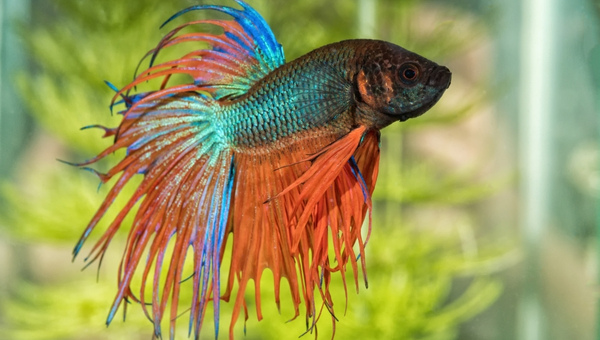
Crowntail Betta Fin Rot: How to Protect Those Spiky Fins
If your Crowntail Betta’s once-sharp, spiky fins are starting to look uneven, clumped, or rounded, fin rot may be the culprit. While fin rot can affect any betta, Crowntails are uniquely vulnerable because their thin, elongated rays are easy to damage and infection spreads quickly across that extra surface area. The good news: with early action and the right setup, most Crowntails recover well.
What Makes Crowntails Different (and More At-Risk)
- Fragile, spiky rays: The signature “crown” look comes from extended rays and reduced webbing. This delicate tissue tears and frays more easily than on other tail types.
- More surface area: More fin edge means more contact points that can snag on decor or be damaged by flow—opening doors for bacteria.
- Flow sensitivity: Even modest current can bend, rag, or split rays. Repeated stress leads to rot.
- Visual impact: Minor damage looks dramatic on Crowntails; early rounding or clumping of tips is especially noticeable.
Fin Rot vs. Simple Fin Loss (Don’t Confuse Them)
Not every ragged edge is infection. If you’re unsure, compare signs with this guide:
Betta Fin Rot vs. Fin Loss.
How to Spot Fin Rot in Crowntails
Early Signs
- Sharp crown tips round off or lose definition
- Clumping or fusing of individual rays, reducing the “spiky” look
- Fin edges appear translucent, white, brown, black, or red at the tips
Moderate to Severe Signs
- Noticeable melting of the crown (webbing seems to return, spikes look stuck together)
- Holes or missing sections of finnage
- Inflamed fin base, slime, lethargy, or appetite loss
Common Causes (Crowntail-Specific Risks)
- Poor water quality: Ammonia/nitrite spikes burn delicate rays and invite infection. Test weekly with
water test strips and keep parameters in check (see
Ideal Betta Water Parameters). - Decor injuries: Plastic plants, sharp rocks, and coarse gravel snag spiky rays.
- Excessive flow: Unbaffled filters can push, bend, and fray rays; sustained stress predisposes to rot.
- General stress: Heavy fins tire Crowntails quickly; chilled water, tankmate harassment, or sudden changes lower immunity.
Quick Diagnosis Checklist
- Test your water today. Ammonia and nitrite should be 0 ppm; nitrates ideally <20 ppm. Use
reliable test strips. - Inspect decor and flow. Remove anything rough; switch to silk or live plants. Baffle or swap to a sponge filter.
- Evaluate the edges. Rounding, clumping, and discoloration at the tips point to early rot in Crowntails.
Treatment for Crowntail Fin Rot
Act early to preserve the crown shape. Once spikes fuse or melt, regrowth may not fully restore the original definition.
🔹 Mild Fin Rot (Early Stage)
Aquarium Salt + Clean Water
- Baseline check: Do a 50–90% water change; vacuum detritus.
- Temperature: Keep stable ~78–81°F (avoid cold dips).
- Salt: Dose ~1 tsp aquarium salt per gallon, pre-dissolved. Monitor closely for stress and discontinue if needed.
- Maintenance: Daily partial water changes (50–90%) for up to 7–10 days.
Tools:
Water test kit
🔹 Moderate Fin Rot
Antibacterial Treatment + Soft Environment
- Consider a course of
API Melafix (tea tree extract) to support healing of damaged fin tissue. - Continue pristine water changes and gentle flow; combine with aquarium salt if tolerated.
- Remove plastic plants and any rough decor permanently; prefer silk or live plants.
🔹 Severe Fin Rot / Body Rot
Broad-Spectrum Medication Strategy
- Perform a large water change (up to 90%).
- Use a combination protocol (e.g., Maracyn + Maracyn 2) per label directions. Many owners start at ~half dose and step up cautiously—observe closely.
- If no change after a full course, pause 4–5 days, then reassess.
- Expect regrowth to start clear/translucent; the sharp crown tips may not fully return.
Get the Betta Fish Guide Book for step-by-step care routines, dosing logs, and troubleshooting checklists.
Healing Timeline (What Crowntail Owners Should Expect)
- Days 1–3: Spread slows/stops; edges look less inflamed.
- Days 4–7: Appetite and energy improve; discoloration may lessen.
- Days 7–14: Fine, clear regrowth is common; tips still lack sharp points.
- 2–4+ weeks: Fins fill in. Some Crowntails won’t regain the exact crown definition even after full recovery.
Preventing Fin Rot in Crowntails
- Water quality first: Keep ammonia and nitrite at 0 ppm; change 25–50% weekly. Verify with
test strips. See
Ideal Betta Water Parameters. - Gentle filtration: Use a sponge filter or baffle the outflow.
- Safe scaping: Avoid plastic plants or jagged decor. Choose silk/live plants and smooth wood/rocks.
- Stable heat: Keep 78–81°F; avoid temperature swings.
- Tank setup & size: Provide adequate space and appropriate equipment. See our
Betta Fish Tank Guide. - Quarantine newcomers: Plants and tankmates can introduce pathogens; quarantine before adding.
Frequently Asked Questions (Crowntail Focus)
Will my Crowntail’s crown shape grow back after fin rot?
Usually the fin tissue regrows, but the original sharp, separated tips may not fully return. Early action offers the best chance of preserving definition.
Is fin rot more dangerous in Crowntails than other bettas?
The disease isn’t inherently more lethal, but Crowntails suffer faster cosmetic damage and functional stress from torn rays—so it feels worse and can escalate quickly without intervention.
Should I reduce flow during treatment?
Yes. Switch to gentle, even flow (sponge filter is ideal). Strong current continues to fray rays and delays healing.
How will I know it’s healing?
Spread stops, inflammation subsides, and thin clear regrowth appears at the edges. Over time it gains color.

Final Tips for Crowntail Owners
- Inspect fin tips during feeding—early rounding/clumping is your cue to act.
- Keep a small “hospital kit” on hand: salt, conditioner, test strips, and a gentle medication like
API Melafix. - Document changes with weekly photos to track progress.

Credit: aquariumopinions.com
For a broader overview that applies to all betta fin types, see our complete primer on identifying, treating, and preventing fin rot (and bookmark the comparison guide:
Fin Rot vs. Fin Loss ).
Columnaris Treatment, Symptoms, & Disease

Columnaris forming around the gills and down the side of the body
Columnaris is a highly contagious bacterial infection caused by the bacterium Flavobacterium columnare, which is naturally present in most aquariums. The disease is often referred to as:
- Cotton wool disease – due to the fluffy, white, mold-like patches it can create
- Saddleback disease – due to characteristic lesions near the dorsal fin
- Flexibacter infection – an older term from a former genus name
Why It’s Dangerous
While the bacteria are common, they usually only become a problem when a fish’s immune system is compromised—often due to poor water conditions, stress, injury, or sudden changes in the tank environment.
Columnaris can progress very rapidly, sometimes killing a fish within 24–72 hours if left untreated. Early detection and immediate intervention are critical and one of the first things to do is to test the water!
Symptoms of Columnaris in Bettas
Flexibacter columnaris, also known as columnaris or cotton wool disease, typically shows the following symptoms:
- White or grayish cotton-like growths on the body, fins, or mouth
- Redness or inflammation of the skin and fins
- Fin rot (frayed or disintegrating fins)
- Lethargy and loss of appetite
- Difficulty breathing or gasping at the surface
- Skin ulcers or lesions
Water Testing Helps Identify the Root Cause
Columnaris is opportunistic—meaning it often infects fish when they’re already stressed or immunocompromised. One of the most common stressors? Poor water quality.
By testing your aquarium water, you’re checking for:
-
Ammonia – should be 0 ppm
-
Nitrites – should be 0 ppm
-
Nitrates – ideally under 20–40 ppm
-
pH levels – should be stable, typically around 6.5–7.5 for bettas
-
Temperature – should be stable (76–80°F)
If any of these are out of range, they could be triggering the infection or making it worse. Treating the disease without fixing the root cause means your fish could get sick again—or not heal properly.
 Click For Our Favorite Test Kit
Click For Our Favorite Test Kit
Causes and Risk Factors of Columnaris & Betta Fish Cotton Wool
Several factors can contribute to columnaris outbreaks in betta fish:
- Poor water quality: High ammonia or nitrite levels, low pH levels, and fluctuating temperatures can stress bettas and increase their susceptibility to infections. Check your water quality using a testing kit.
- Stress: Overcrowding, aggressive tank mates, sudden environmental changes, and poor nutrition can weaken a betta’s immune system.
- Injury: Open wounds or abrasions provide a point of entry for bacteria.
- Betta’s anatomy: Their long, flowing fins and delicate skin make them more vulnerable to infections.
Treating Columnaris in Betta Fish
- Isolate the fish: Move the affected betta to a clean quarantine tank with appropriate water parameters and filtration.
- Start medication: Get API PIMAFIX, which is designed to rapidly treat fungal infections using an all-natural extract from West Indian Bay Trees.
 Click here to learn more about Pimafix
Click here to learn more about Pimafix
- Perform water changes: Change 50% of the water daily during treatment and maintain optimal water parameters with a testing kit.
- Monitor the fish: Observe the betta closely for signs of improvement or worsening symptoms. Adjust treatment as needed.
- Continue treatment: Complete the full course of medication even if the fish appears to have recovered.
- Prevent reinfection: Maintain excellent water quality, minimize stress, and quarantine new fish to prevent future outbreaks.
Columnaris Treatment Options
- Antibiotics: The most effective treatment for columnaris is antibiotics. Kanamycin, furan-2, and erythromycin are commonly used. Follow the dosage instructions exactly and complete the full course of treatment.
- Antibiotics:
- Kanamycin & Furan-2: 7-10 days
- Why not longer:
- Antibiotic Resistance: Overuse or prolonged use of antibiotics can lead to antibiotic-resistant bacteria, making future infections more difficult to treat. Kanaplex is another popular option.
- Organ Damage: Extended exposure to antibiotics can potentially damage the fish’s internal organs, such as the liver and kidneys.
- Disruption of Beneficial Bacteria: Antibiotics can also harm beneficial bacteria in the fish’s gut and in the aquarium, potentially leading to digestive issues and imbalances in the nitrogen cycle.
- Why not longer:
- Maracyn-Two: 5-7 days (Often used in conjunction with another antibiotic, so the total duration may be longer)
- Why not longer:
- Similar risks to other antibiotics: While Maracyn-Two is generally considered safe for fish, prolonged use can still lead to antibiotic resistance, organ damage, and disruption of beneficial bacteria.
- Why not longer:
- Kanamycin & Furan-2: 7-10 days
- Antibiotics:
- Antibacterial Baths: These can be used in conjunction with antibiotics or as a standalone treatment for mild cases. Prepare a bath with a suitable antibacterial medication and follow the instructions on the label.
- Water Changes: Frequent water changes (50% daily) are essential for removing bacteria and waste products from the tank, promoting healing, and preventing reinfection.
- Aquarium Epsom salt: Adding aquarium salt can help reduce stress, improve gill function, and create a less hospitable environment for bacteria.
Preventing Columnaris
The best way to deal with columnaris is to prevent it from happening in the first place. Follow these tips to keep your betta healthy and free from infection:
- Maintain optimal water quality: Test your water regularly with a testing kit and keep ammonia, nitrite, and nitrate levels at zero. Maintain a stable temperature and pH within the ideal range for bettas.
- Quarantine new fish: Quarantine them in a separate tank for at least two weeks. This will allow you to observe for any signs of illness and prevent the spread of disease to your established fish.
- Minimize stress: Provide your betta with a spacious tank, plenty of hiding places, and a varied diet. Avoid overcrowding and aggressive tank mates. Make gradual changes to their environment and avoid sudden fluctuations in water temperature.
How to Set Up a Quarantine Tank for Betta Fish & Compatible Tank Mates

Best Overall – Fluval Spec Aquarium Kit
🐠 1. Quarantine Tank Setup for a Betta
Size:
-
5 gallons minimum for a solo betta quarantine, but 10 gallons is better if you’re quarantining tank mates too.
-
If the QT is for a betta + companions, size up so everyone has breathing room.
Equipment Adjustments:
-
Heater: Keep steady between 78–80°F (bettas like it a touch warmer than many tropicals).
-
Gentle Filtration: Bettas hate strong currents—use a sponge filter or baffled HOB filter.
-
Cover/Lid: Bettas jump more than people think—tight-fitting lid is a must.
-
Hides & Sight Barriers: Betta-safe silk plants, caves, or floating betta logs help reduce stress. Avoid sharp decor—bettas’ fins are delicate.
Substrate:
-
Bare bottom makes it easy to spot waste and uneaten food during quarantine.
👀 2. Quarantine Process for a Betta
-
Length: 2–4 weeks.
-
Observation: Look for fin rot, velvet (gold dust on body), ich (white spots), lethargy, or clamped fins.
-
Water Changes: Bettas produce less waste, but in QT you still want 20–30% changes every few days to keep ammonia at 0.
-
Feeding: High-protein diet (betta pellets, frozen bloodworms, brine shrimp). Feed sparingly in QT to reduce waste load.
🤝 3. Appropriate Betta Tank Mates
Bettas have personalities ranging from “chill roommate” to “dictator fish.” Always quarantine new tank mates separately first before introducing to the betta’s main tank.
Generally Safe Tank Mates
(Best in 10+ gallon tanks with lots of plants/hides)
-
Peaceful bottom dwellers: Corydoras catfish (pygmy corys for smaller tanks), kuhli loaches.
-
Small schooling fish: Ember tetras, harlequin rasboras (avoid fin nippers like serpae tetras).
-
Non-fish options: Nerite snails, mystery snails, amano shrimp (large shrimp have better survival odds).
Tank Mates to Avoid
-
Anything flashy & finny: Fancy guppies, male gouramis—bettas may see them as rivals.
-
Known fin nippers: Tiger barbs, some danios.
-
Overly active fish: Can stress the betta.
🧪 4. Quarantining Betta Tank Mates
If you’re adding tank mates:
-
Quarantine them separately for 2–4 weeks in their own QT tank.
-
Use the same temperature range as the betta’s eventual home to ease transition.
-
Observe for external parasites, fungal infections, and signs of stress.
-
Only after the QT period do you slowly introduce them to the betta’s main tank—with a temporary tank divider for a day or two so everyone can size each other up without bloodshed.
Dealing with Betta Fish Popeye & Bulging Eyes

Betta fish popeye, also known as bulging eyes or exophthalmia, is a condition in which one or both of a betta fish’s eyes bulge outwards. This is swelling caused by a buildup of fluid or an infection behind the eye.
Understanding Bulging Eyes & Popeye
- Bulging eyes, or exophthalmia, is a condition where one or both of your betta’s eyes protrude abnormally. This can be caused by various factors, including:
- Bacterial infections
- Physical injuries
- Poor water quality
- Parasites or fungal infections
- Recognizing the symptoms early is crucial for effective treatment.
Look out for:
- Protruding eye(s)
- Cloudy or white film over the eye
- Redness or swelling around the eye socket
- Lethargy and loss of appetite
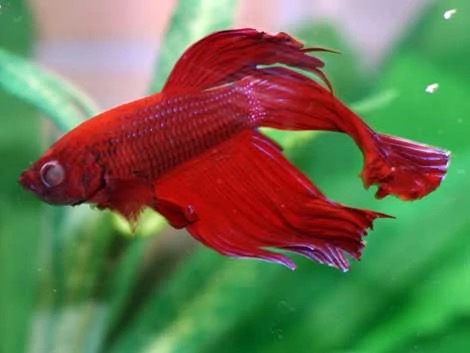
Caring for Your Betta: Prevention and Treatment
Preventing and treating bulging eyes in betta fish involves maintaining optimal tank conditions and providing prompt care when issues arise. Here are some tips:
- Maintain excellent water quality through regular changes and proper filtration – check your water with a testing kit!
- Avoid overcrowding and provide a stress-free environment
- Use safe, smooth decorations to prevent injuries
- Quarantine new fish before introducing them to your main tank
- Provide a nutritious, varied diet to boost your betta’s immune system
- Use Kanaplex, which is an anti-bacterial treatment
- You can also improve tank conditions with aquarium Epsom salt.
If you notice signs of popeye, act quickly. Isolate the affected fish, improve water conditions, and consider using Kanaplex medication.
Water Hardness 101: The Hidden Betta Fish Killer You Didn’t Know About
Betta fish are more sensitive than many aquarium owners realize, and water hardness is a crucial factor that can make or break their health. If your betta is acting lethargic, gasping at the surface, or showing signs of fin rot, the hidden culprit could be your water’s hardness. In this guide, we’ll break down what water hardness is, how it affects bettas, and the essential steps you need to take to keep your fish healthy.
Why Water Hardness Can Be Deadly for Betta Fish
Bettas are native to slow-moving, slightly acidic waters in Southeast Asia. When their tank water is too hard or too soft, it can cause stress, health issues, and even early death. Hard water can lead to mineral buildup, while soft water can destabilize pH levels, both of which can harm your betta.
The Must-Know Water Parameters for Betta Fish
| Parameter | Ideal Range for Betta | Symptoms of Imbalance | Solutions |
|---|---|---|---|
| Chlorine | 0 ppm | Gasping at surface, fin damage, stress | Use a water conditioner like Seachem Prime or API Stress Coat. |
| pH | 6.5 – 7.5 | Stress, discoloration, fin clamping | To lower pH: Use Indian Almond Leaves, peat moss, or driftwood. To raise pH: Add crushed coral or a pH buffer. |
| Ammonia | 0 ppm | Lethargy, gill burns, fin rot | Perform 25-50% water change, add beneficial bacteria (e.g., Seachem Stability). |
| Nitrite | 0 ppm | Gasping, lethargy, red gills | 25-50% water change, use zeolite or ammonia remover. |
| Nitrate | < 20 ppm | Stress, algae overgrowth | Regular water changes, live plants, or nitrate-removing media. |
| GH (General Hardness) | 50-100 ppm (3-5 dH) | Curling fins, lethargy | To increase GH: Add crushed coral or mineral salts. To decrease GH: Use RO/DI water or driftwood. |
| KH (Carbonate Hardness) | 40-80 ppm (2-4 dH) | pH instability, stress | To increase KH: Add baking soda or crushed coral. To decrease KH: Use RO/DI water or peat moss. |
Test Your Water Hardness! – Step-by-Step
- Use a liquid or strip test kit to measure GH and KH levels.
- Test weekly, especially if you notice unusual betta behavior.
Adjusting Water Hardness: Quick Solutions
- To Soften Water: Add Indian Almond Leaves, peat moss, or use RO/DI water.
- To Harden Water: Use crushed coral or mineral additives.
Take Action Before It’s Too Late
Ignoring water hardness can be a silent killer for betta fish, causing stress, health complications, and even death. Regular testing, careful monitoring, and simple adjustments can prevent disaster and keep your betta thriving.
Call to Action:
Download our comprehensive Betta Fish Care Guide for a complete guide on betta fish care, including water quality management, disease prevention, and diet recommendations. Click here to get your copy!



